This article is part of a new Education Next series commemorating the 50th anniversary of James S. Coleman’s groundbreaking report, “Equality of Educational Opportunity.” The full series will appear in the Spring 2016 issue of Education Next.
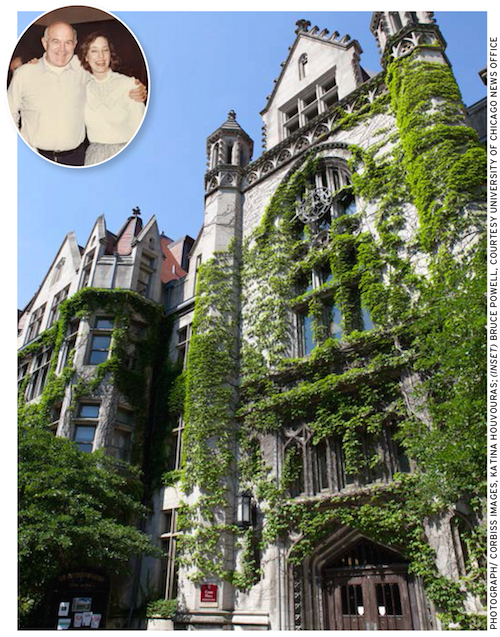
Inset: Coleman and Kilgore celebrate her successful dissertation hearing.
Given his early educational experiences, it is astonishing that James Samuel Coleman became one of the most eminent sociologists of the 20th century and the author of some of its most influential education studies.
Born in Indiana in 1926, Coleman attended school there, in Ohio, and in Louisville, Kentucky—where his high-school education did little to stimulate an interest in academic pursuits. Beyond sports, nothing engaged or challenged him.
After a stint in the military, Coleman earned a degree in chemical engineering from Purdue University, and began working at the Eastman Kodak company. That work, though, did not satisfy his intellectual curiosity. After two years at the company, he enrolled in graduate school at Columbia University.
In a short unpublished autobiography, Coleman later wrote: “I came to Columbia resolving to give the educational system one last chance. It had failed, I felt, through high school and the several colleges I had attended. My teachers had been engaged in transmitting information, but none (except two at Purdue) had been interested in me, in what I might do with the information they had imparted.”
In graduate school, then, he took an entirely different direction: “I decided to go back to school, either in physical chemistry, which I had especially enjoyed as an undergraduate, or in social psychology, which I had come to be interested in [while] taking an evening course at the University of Rochester,” Coleman said in an interview with the sociologist Richard Swedberg. “I finally decided upon the latter, because regarding myself as relatively indolent, I … chose the area that was of greater intrinsic interest to me, and thus could claim a greater fraction of my attention throughout my life.”
Giving that “last chance” to Columbia proved a good bet. Coleman received his doctorate in sociology in 1955 and joined the faculty at the University of Chicago a year later. In 1959, he moved to Johns Hopkins University, where he founded what became the Department of Sociology, and returned to Chicago as University Professor in 1973. Though he is best known today for his work on the massive study that produced “Equality of Educational Opportunity” (EEO), or the Coleman Report, Coleman’s intellectual appetite was prodigious.
“Jim Coleman never had a single research and scholarly agenda,” said Barbara Schneider, one of his co-authors on Redesigning American Education (1997). “The scope of his interests was enormous, and the range and depth of his intellectual pursuits could only be described as staggering.” In addition to his research in education, Coleman launched the field of mathematical sociology, provided new models for understanding power in societies, and constructed a theoretical framework for human behavior amenable to both economists and sociologists.
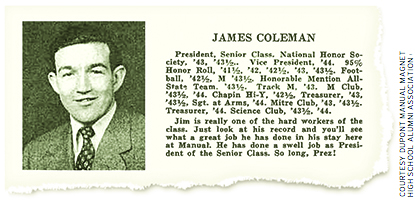
So what of that “failure” of his earlier education? His father was a teacher and coach, but he left education for manufacturing and moved his family frequently. In the summer following Jim’s freshman year of high school, the Colemans moved to Louisville. At Male High, the city’s college-preparatory school for boys, the admissions deadline had passed, so Jim enrolled at duPont Manual High, a vocational and engineering school where football was king. He joined the team, though he later conceded, “Arguably, my comparative advantage lay elsewhere.” Looking back on those days, he remembered “wanting to make a pact” with the teachers “by saying, ‘Look, I don’t care if you don’t teach us anything. Just leave intact the curiosity and inquisitiveness we had when we came to school.’”
He graduated from high school in 1944, and that June, the battlegrounds of World War II expanded to France, where thousands of Allied soldiers began landing on the shores of Normandy to reclaim the country. Coleman started college in the fall, but soon left to join the U.S. Navy. In and out of the military and educational institutions during these tumultuous times, Coleman completed his bachelor’s degree in 1949.
Graduate Studies
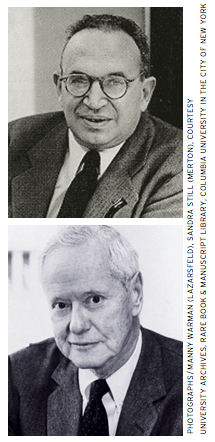
If Coleman’s early schooling did little to spark intellectual interests, his experiences at Columbia certainly compensated. Reading his account of graduate school, one is struck by Coleman’s insatiable appetite for learning. In addition to taking his regular sociology courses, he sat in on courses in mathematics, physics, and economics. He described standing bashfully at the edge of a crowd of students surrounding a professor after class—listening carefully as they challenged the professor on a number of points. Coleman’s experiences with his fellow graduate students provide a different picture. At Columbia’s Bureau of Applied Social Research, where he served as a research associate, he regularly engaged his peers in playful but rigorous debates.
Robert Merton, a professor and mentor of Coleman’s at Columbia, gave this account of his arrival at the university: “So far as an episodic memory allows me to say, Paul Lazarsfeld and I spotted Jim as a sociological talent within months after he came to the department. Indeed, we were unwittingly and then quite overtly competing for his attention.”
Coleman’s account of his arrival lacks any hint of solicitous faculty. Instead, he recalled Merton’s devastating criticisms of his work and his own difficulties acquiring a new vocabulary.
He did, however, draw some clear distinctions between Merton and Lazarsfeld. Merton could be a stern critic of students’ work, but he was also supportive of their interests, a meticulous reviewer of their work, and a mesmerizing lecturer. Lazarsfeld, on the other hand, restricted graduate student endeavors to his own interests and preconceived conclusions.
A New Interest
Coleman’s interest in studying educational institutions emerged during a dinner conversation with a fellow graduate student, Marty Trow, and the men’s wives. Trow mentioned that he had attended an elite academic public school in New York City, where distinguished alumni, including Nobel laureates, returned to speak at assemblies. Trow’s wife, from Atlanta, had gone to an elite private girls’ school. Jim? Manual High, where football reigned and academics languished. Coleman was struck by the wide disparities in these high-school experiences. “The conversation raised problems that interested me greatly,” Coleman wrote in his autobiography. “How did such different subcultures come into existence and persist, and what kind of impact did they have upon those young people who passed through them?”
His first research grant as a junior professor at the University of Chicago allowed him to pursue that interest and provided the data for his book The Adolescent Society (1961). An analysis of student status systems at several Illinois high schools, the study found that adolescent culture greatly influenced the degree to which students devoted themselves to sports or academics.
That study sparked his interest in developing competitive academic games. If student status was driven by victories in sports, he wondered, would young people develop a higher regard for academics if they had opportunities to engage in academic games that pitted school against school? Coleman began exploring that possibility with games he developed and tested with students attending Baltimore public schools. He reported that the experience gave him his first intuitive insights into how a social structure (in this case, the rules of the game) affects individual behaviors.
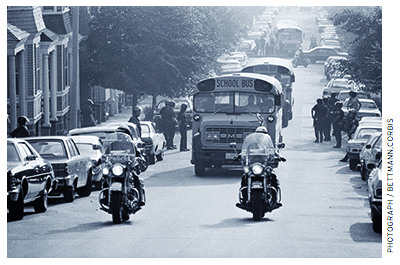
The Coleman Report
In 1965, Coleman was asked to lead a congressionally mandated study on equality of opportunity in America’s racially segregated schools. He and his colleagues faced a gargantuan task. Data from nearly 600,000 students and thousands of teachers and principals flooded their offices and had to be transferred manually to an electronic format. Computing power in the mid-1960s was sorely limited: to achieve stable and reliable conclusions from the data, the team had to randomly select a thousand cases, run a statistical procedure, and repeat that process countless times. Legend has it that as the 700-page report neared completion, Coleman retreated alone to a local hotel, where he verified all the statistical data included in the report.
The Coleman Report, released in the summer of 1966, found that the family backgrounds of the student body had a greater influence on student achievement than did school resources, and that “a pupil’s achievement is strongly related to the educational backgrounds and aspirations of other students in the school.” The findings set the stage for furthering desegregation efforts—in particular, court-ordered busing of students in an attempt to increase the diversity of city schools.
In 1975, Coleman published a follow-up study that concluded that the main impediment to school desegregation was the growing residential segregation “between central city and suburbs,” and that the “current means by which schools are being desegregated are intensifying that problem, rather than reducing it.” Busing within large urban areas had not succeeded in creating a diversity of backgrounds in the schools but had mainly integrated African American students from weak educational backgrounds with white students from similar situations.
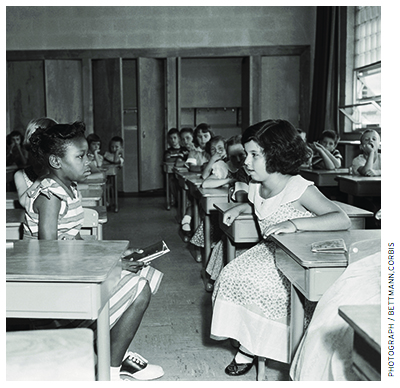
Coleman’s claims drew a vitriolic response, particularly from some fellow sociologists, who assumed he no longer favored desegregation. At the 1976 meeting of the American Sociological Association, posters bearing swastikas and Coleman’s name were displayed in the main auditorium, and the ASA’s president, Alfred McClung Lee, led a failed attempt to have him expelled. The flap eventually subsided, and though Coleman’s work on education remained controversial for more than a decade, he was elected president of the ASA in 1990.
The attacks by colleagues must have been especially painful for a man who had actively opposed segregation. In July 1963, he and his first wife, Lucille, had taken their three boys—Tom, 8, John, 6, and Steve, 5 months—to participate in a demonstration at a whites-only amusement park outside of Baltimore. As the Colemans attempted to enter the park with a black family, they were arrested, as anticipated, along with nearly 300 fellow demonstrators.
Working with Coleman
I was a graduate student in sociology at the University of Chicago when Jim Coleman invited me and a fellow student, Tom Hoffer, to work with him at the university’s National Opinion Research Center (NORC) for a couple of months in 1980. Those “couple of months” became a couple of years, as we worked on a study comparing student achievement in public and private schools. This study, along with four others conducted by our colleagues, had been commissioned by the U.S. Department of Education as a way of stimulating interest in the rich and extensive data that had been (and would be) collected in the longitudinal study known as “High School and Beyond.” The study included survey data from 70,000 students in 1,015 public and private secondary schools, student achievement tests in mathematics and language arts, and survey data from school officials.
There were certain things I knew as I began this work with Coleman: He was an unpretentious man who rode to work on a 1950s bicycle, fixed his reading glasses with a rubber band, and rarely wore a sports jacket, much less a suit. He took time for family, students, and hardcore exercise as the time of day might dictate. If we were scheduled to meet at his office, I knew he would arrive late. When I walked with him across campus, I understood why: Coleman would stop and talk with any student or child he encountered. After Hoffer and I began working with him, I discovered his family commitments. If we went to his home to work in the evening and heard the pitter-patter of little feet from upstairs, we knew it would be a while before we got started. Coleman always put his toddler son, Daniel, to bed, and was perpetually optimistic about when that task would be complete.
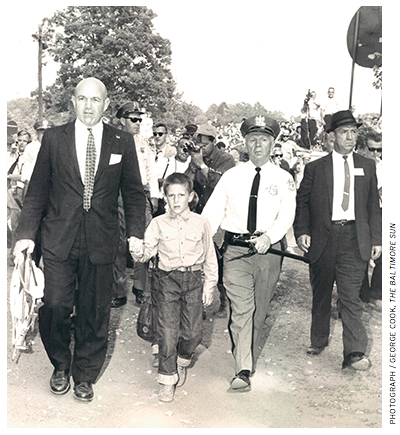
Coleman was a workaholic. If he was flying back to Chicago in the evening, we could expect to work with him that night. It should have come as no surprise, since Coleman and his colleagues had completed the daunting EEO study in one year. In an era long before cell phones, everyone relied on public telephones when traveling. When Coleman got off a plane, he ran straight to a pay-phone bank and engaged three or more phones simultaneously—leaving a phone number when he couldn’t reach his party. If you were one of the persons he called, you could expect to hear phones ringing and Coleman answering them. It was not unusual for him to have a phone in each ear.
When the Department of Education cut off our funding for several months, we didn’t stop. Tom Hoffer and I worked without pay, and we had to scramble for access to the university’s mainframe computer. Using Coleman’s classroom computer accounts, we would begin our work a little before midnight, when the costs of computer runs dropped drastically. When I finally arrived home at 4 or 5 a.m., legal parking spots were seldom available. I acquired a number of tickets, and eventually my car was towed. Retrieving it became a departmental effort and thus a cause for great celebration at the weekly sherry hour.
Fellow graduate students rallied around as we sought to complete literally hundreds of computer runs to verify our statistical results. In 1982, when we published High School Achievement, the book based on our research, Coleman turned over all the royalties to Tom Hoffer and me: I took it as his way of acknowledging the challenges we had faced.
“Public and Private Schools,” which reported our results to the Department of Education, generated a new wave of controversy for Coleman. The report’s most contentious finding was that minority students attending Catholic schools had higher levels of achievement than those in public schools. The study also found that students in private schools increased their participation in extracurricular activities in each succeeding grade, while public school students appeared to decrease their participation. Critics pointed out, justifiably, that we had not adequately controlled for initial differences in the student populations as they entered either public or private schools. For instance, the family background variables we used to control for such differences may have failed to capture more nuanced variations in parental interest in education. Coleman never balked at criticism; he quickly looked for alternative methods to improve the control over initial differences. (A few years later, using survey data from the second round of “High School and Beyond,” the team showed that students in private schools had greater learning gains between their sophomore and senior years than did students in public schools. Thus, the achievement gap could not be attributed solely to the performance of the incoming freshmen.)
Occasionally, there were lighter moments during this intense debate. Because Coleman was a lightning rod for controversy, I was often asked to present our results to various professional organizations. After giving a short talk at a meeting of the Urban Superintendents Association of America, I was peppered with questions. The superintendents were curious to know our theories on why Catholic school students outperformed their peers in public school. I began to expound, and was in the midst of a protracted statistical explanation, when New York City Schools chancellor Frank Macchiarola blurted out: “It’s very simple. In Catholic schools, all children have souls. We don’t have that in the public sector.”
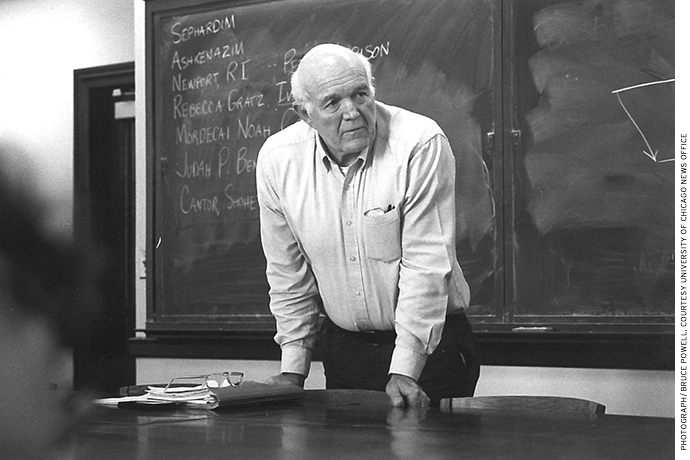
Teacher and Mentor
Coleman assumed a protective role with young scholars. During the extended debates on the public and private schools outcomes, we were often obliged to respond to criticism from other scholars. One academic journal commissioned six papers to critique our work, and when we reviewed the drafts, Hoffer discovered a possible mistake in one. Many academics would have seized upon such an opportunity to turn the tables on a critic. Instead, Coleman ruminated for a moment—the critic in question was a highly promising junior scholar—and then suggested that Hoffer call the researcher and allow him to change the analysis if he wished.
In the fall of 1980, when a group of senior education scholars was coming to NORC to critique the first drafts of “Public and Private Schools” and the other reports emanating from the “High School and Beyond” baseline data, Coleman told his graduate students that we were expected to attend the sessions and the associated luncheon. But as the morning session progressed, a note from the NORC administration was circulated to the grad students, informing us that we were not to attend the luncheon but should instead go to a public restaurant in the building. As several of us were heading out, Coleman caught up and asked where we were going. We reported on the new directive, and Coleman said, “Well, I’ll join you!” The waitress was taking our orders when one of the NORC administrators arrived and instructed us all to join the official luncheon.
Having pioneered the field of mathematical sociology, Coleman was often asked to review papers submitted to various scholarly journals. Lacking the time to read all of them, he established a noncredit seminar in mathematical sociology where each week a different student was assigned to present one of the papers. Early in a student’s talk, Coleman would lean back in his chair, scratch his bald head and say, “I don’t understand” or “How does that work?” His queries calmed the insecurities of those who were confused—but for the student presenting the paper, they could be nerve-racking.
Coleman kept working until just before his death from cancer in March 1995. As Zdzislawa Walaszek, his second wife, later wrote: “He was sitting in an armchair with his writing in his lap as usual. He felt good about it and said: ‘Now I know what to write.’” Two days hence, she took him to the university hospital, where he died just days later.
Enduring Contributions to Education Research and Policy
It is difficult to overstate the contributions James Coleman made to education research and policy formation in his four-decade career. The controversies that emerged from his research recruited exceptionally talented people from a variety of fields; his wide-ranging intellectual interests expanded the conceptual tools available for understanding important aspects of childhood and adolescence; and finally, his expectations for policy research have been institutionalized in ways that have improved both the relevance and quality of social-science research in general.
Talented scholars. When the Coleman Report was released, researchers and statisticians were confident that the findings were flawed in ways that would affect the major conclusions. Harvard faculty members convened a multi-year seminar that prepared, among other things, a critical analysis of the report’s contents and practical application. Economists such as Eric Hanushek, and the journalist and social scientist Christopher Jencks, were asked to participate in the seminar and became exceptional scholars in the field of education. Subsequent controversies drew new talent—some from other fields, others novices in sociology or public policy. Jencks captures what many others must have thought: “Just the idea that one could take social-science evidence and bring it to bear on policy issues was really inspiring. I had been in Washington, and the way people got things done there was to tell a story about your Aunt Matilda.”
Expanded conceptual tools. One of the most important conceptual tools that Coleman brought to the study of education was that of “social capital.” In the context of rearing and educating children, he defined this as the “norms and relationships between adults and children that are of value for a child’s growing up.” Religious schools, he argued, are more likely to offer the tight-knit network of supporting adults who can provide these consistent values and norms to help the child prosper.
Adults transfer social capital in many ways, he said—by providing a “sympathetic ear for problems a child may not want to discuss with their parents,” by leading youth groups, or by supporting youth-led activities, for example. Social capital, according to Coleman, is most valuable to children who lack such support in their own homes, for whatever reason—perhaps because their parents are overwhelmed with work responsibilities or suffer from drug abuse or mental illness. For such networks to be effective, its members must live and work in close proximity to one another, a point that illuminates the obstacles that urban education, and, yes, busing, create in forming a healthy environment for children. Though he himself was not a religious man, Coleman concluded that “religious organizations are one of the few remaining organizations in society, beyond the family, that can cross generations. Thus, they are among the few in which the social capital of an adult community is available to children and youth.”
Policy research. “Coleman’s commitment to his field was moral,” said Charles Bidwell, one of Coleman’s colleagues at the University of Chicago. “For him, social science could not be justified merely as an intellectual exercise. Rather, it had to prove its worth by showing policymakers how to design legislation that would improve social welfare.”
James Coleman not only created the demand for large social surveys in education, but also established the norms for developing a policy research agenda and sharing the data emerging from investigations. With the study on equality of opportunity, an outcome of the 1964 Civil Rights Act, Coleman developed his “first draft” of those norms. The lawmakers needed the information delivered quickly and in plain English. To be valuable, the research had to address the often-competing interests of legislators and various public constituencies (teachers, parents, superintendents, and others). In each successive national study, Coleman became more effective at incorporating those competing interests into the research design. The “High School and Beyond” study began with extensive interviews of superintendents, teacher organizations, and parent groups. Now, federal agencies have routinized this inclusive approach to developing federally sponsored studies in education. Teachers, principals, superintendents, policymakers, parents, minority groups, and yes, researchers—all are represented in research advisory panels today.
Coleman was also adamant in his conviction that survey data should be publicly available. “Equality of Educational Opportunity” includes an ample appendix devoted to numbers—correlation coefficients, to be specific. Coleman wanted all social scientists to have access to the data so they could challenge his methods, results, and analyses. Today, the actual survey data from the longitudinal studies, such as “High School and Beyond,” are available to students and scholars.
In the social sciences, public access to data is now the norm at a variety of federal agencies, such as the National Science Foundation. This openness dramatically expanded the quality of research that social scientists can pursue, and it discourages unscrupulous practices such as inventing or manipulating data. It also means, essentially, that anyone can engage in debate, and anyone can launch a study—including the young scholars who often rely on public data to get their start. We have James Coleman to thank for that.
Sally B. Kilgore is the former president and CEO of the nonprofit Modern Red SchoolHouse Institute, which provided turnaround services to high-poverty, low-performing schools, and the co-author of From Silos to Systems: Reframing Schools for Success.


